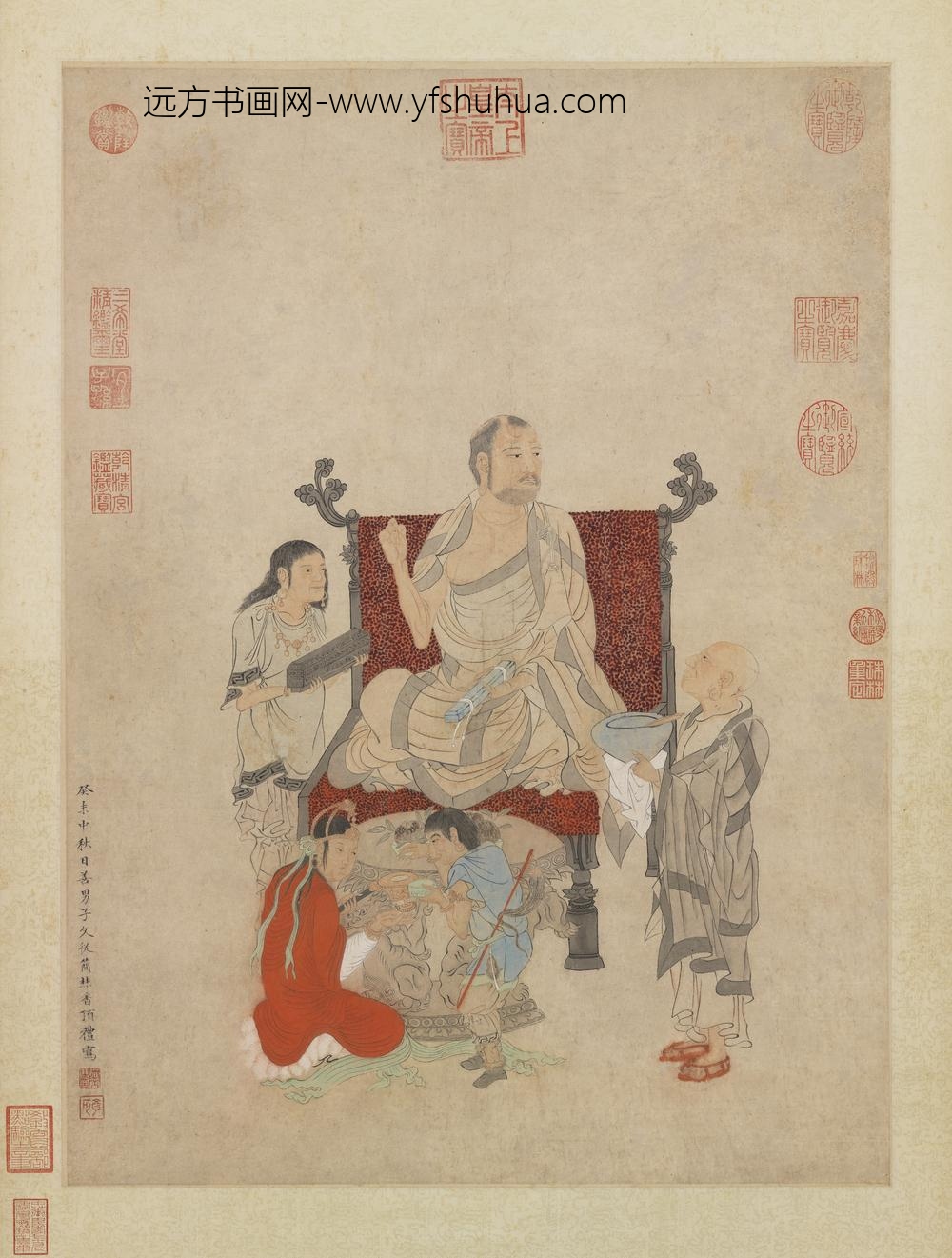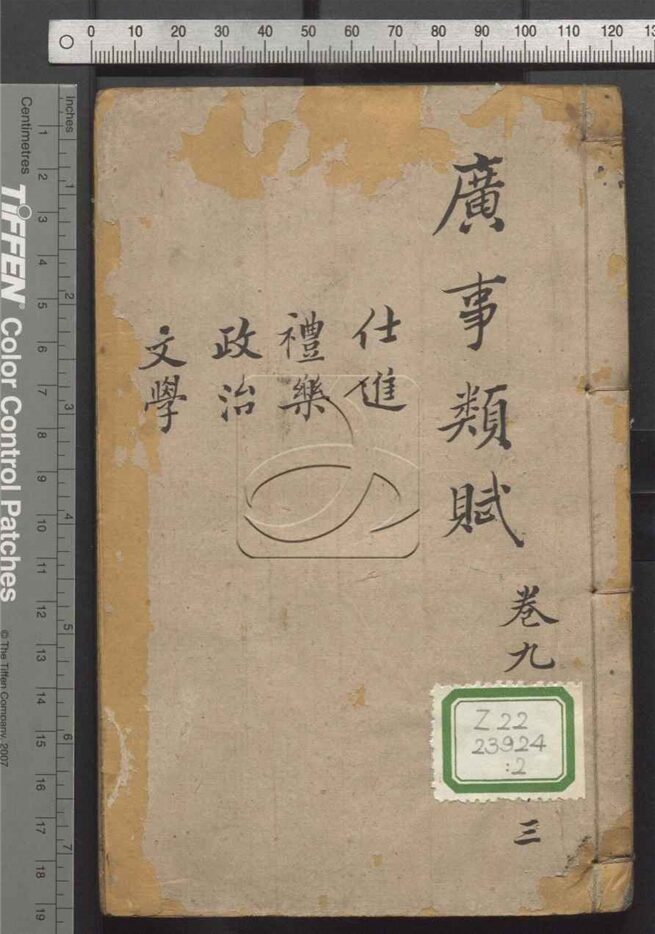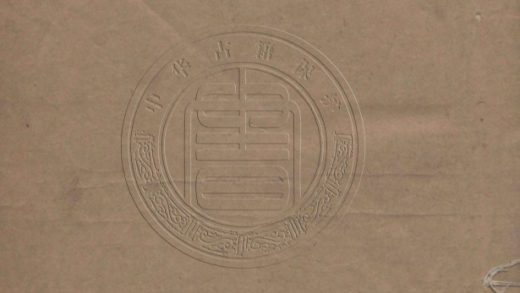【作品基本信息】
| 作者 | 文从简 |
| 品名 | 礼佛图轴 |
| 朝代 | 明朝 |
| 文件大小 | 18.03MB |
| 分辨率(DPI) | 300×300 |
| 像素大小 | 2133×2819 |
| 尺寸(CM) | 18.05×23.86 |
| 创作时间 | 明思宗崇祯十六年(1643) |
| 作品数量 | 1 |
| 作品收藏 | 台北故宫博物院 |
| 图片格式 | 默认提供TIF和JPG两个版本 |
基本数据
| 藏品类型 | 绘画 |
| 品名 | 明文从简礼佛图轴 Worshipping the Buddha |
| 分类 | 绘画 |
| 作者 | 文从简 |
| 创作时间 | 明思宗崇祯十六年(1643) |
| 数量 | 一轴 |
典藏尺寸
| 【位置】 | 【尺寸】(公分) |
| 本幅 | 63.2×46.6 |
质地
| 【质地位置】 | 【质地】 |
| 本幅 | 纸 |
题跋数据
| 【题跋类别】 | 【作者】 | 【位置】 | 【款识】 | 【书体】 | 【全文】 |
| 作者款识 | 文从简 | 本幅 | 癸未(公元1643年)中秋日。善男子文从简焚香顶礼写。 | 楷书 | |
| 印记: 从简之印、彦可 |
|||||
印记资料
| 【印记类别】 | 【印记】 |
| 鉴藏宝玺 | 乾隆御览之宝 |
| 鉴藏宝玺 | 太上皇帝之宝 |
| 鉴藏宝玺 | 嘉庆御览之宝 |
| 收传印记 | 宣统御览之宝 |
| 鉴藏宝玺 | 乾隆鉴赏 |
| 鉴藏宝玺 | 秘殿珠林 |
| 鉴藏宝玺 | 三希堂精鉴玺 |
| 鉴藏宝玺 | 宜子孙 |
| 鉴藏宝玺 | 秘殿新编 |
| 鉴藏宝玺 | 珠林复位 |
| 鉴藏宝玺 | 干清宫鉴藏宝 |
主题
| 【主题类别】 | 【主题(第一层)】 | 【主题(第二层)】 | 【主题说明】 |
| 其他主题 | 器用 | 家具(屏风) | 椅 |
| 次要主题 | 器用 | 香炉.火盆 | 香炉 |
| 次要主题 | 器用 | 饮食器 | |
| 次要主题 | 器用 | 宗教器用 | 经卷、拂尘、香盒、钵 |
| 次要主题 | 果蔬 | 石榴 | |
| 主要主题 | 佛道人物 | 佛道侍者 | 二人 |
| 主要主题 | 佛道人物 | 供养人 | |
| 主要主题 | 佛道人物 | 罗汉(应真、尊者) | 一人 |
| 主要主题 | 佛道人物 | 僧(和尚、尼姑) | 和尚一人 |
技法
| 【技法】 | 【技法细目】 |
| 工笔 | |
| 人物衣纹描法(匀称线条) |
参考数据
| 【类别】 | 【参考数据】 |
| 收藏着录 | 秘殿珠林续编(干清宫),页317 |
| 收藏着录 | 故宫书画录(卷五),第三册,页447 |
| 收藏着录 | 故宫书画图录,第八册,页369-370 |
| 内容简介(中文) | 文从简,生于神宗万历二年(1574),卒于清世祖顺治五年(1648)。江苏长洲人,为文征明曾孙,字彦可,号枕烟老人。崇祯间考取贡生,明亡,入清不仕,书画皆传家学,而稍加变化。书法兼有唐李邕,画山水兼有元倪瓒,王蒙笔法。 本幅画一佛端坐木榻上,二从者捧物侍立两侧,一信女手持香炉,正跪地拈香顶礼。人物用笔勾勒与着色,都明净秀雅可喜,惟画佛造型皆与凡人无异,此乃因明以后,佛像画已脱离宗教而入于纯粹艺术欣赏范围,画家多属兼习,偶或图写,率无稿本藉供临摹。 |
| 内容简介(英文) | Worshipping the Buddha Wen Ts’ung-chien (1574-1648) Ming dynasty Wen Ts’ung-chien was a great grandson of Wen Cheng-ming. His style name was Yen-k’o and his sobriquet was Chen-yen lao-jen. Sometime between 1628-1643, he received his kung-sheng degree. After the fall of the Ming he retired from official life. He studied the great ancient masters of calligraphy and painting, adapting each to his own taste. He modelled his calligraphy after the T’ang master Li Yung and derived his landscape style from Ni Tsan and Wang Meng. This painting shows a Buddha on a couch receiving offerings from two devotees. A nun holds an incense-burner and, prostrate, offers it to the Buddha. The drawing of the figures and the colors all create a clear and pleasing impression. The figures in this Buddhist painting seem little different from those in secular paintings. This demonstrates the tendancy of Buddhist painting from the Ming dynasty onwards to lost its religious associations and to become pure art. Iconographic painters were no longer specialist painters of Buddhist subjects, but painted according to their inclinations and did not follow the canonical compositions for Buddhist painting that had persisted earlier. |
【作品展示】





